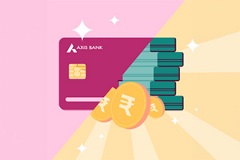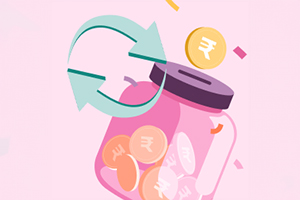In an era where convenience is king, digital banking has become an integral part of our lives. However, this convenience comes with its own set of challenges, particularly the increasing prevalence of digital banking fraud. Understanding the various types of digital banking frauds and knowing how to prevent them is crucial for protecting your hard-earned money.
What is digital banking fraud?
Digital banking fraud refers to illegal activities aimed at stealing funds or sensitive information through digital channels. These frauds exploit the weaknesses in online banking systems, mobile apps and other digital platforms. The perpetrators use various methods to deceive unsuspecting individuals and gain unauthorised access to financial accounts.
Types of digital banking frauds
Phone call scam
These scams involve fraudsters posing as bank representatives. They may inform you of suspicious activity on your account and ask for your account details or OTP to "verify" your identity. Always remember, legitimate bank representatives will never ask for sensitive information over the phone.
Email scam
Email scam, or phishing, involves fraudsters sending emails that appear to be from your bank. These emails often contain links to fake websites where you are asked to enter your login details. Always verify the sender's email address and avoid clicking on suspicious links.
ATM scam
ATM scams typically involve skimming devices and hidden cameras installed on ATMs to capture your card details and PIN. Be cautious of ATMs that look tampered with, and cover your PIN while entering it.
Mobile number scam
Fraudsters may contact you, claiming to be from your mobile network provider, and ask for your personal details, claiming to upgrade your service. This information can then be used to gain access to your banking accounts.
SMS scam
Also known as smishing, SMS scams involve receiving text messages that appear to be from your bank, asking you to click on a link or call a number to verify your account details. Avoid responding to unsolicited messages, and always verify the authenticity of the message with your bank.
Fake website scam
Fraudsters create fake websites that mimic those of legitimate banks. These websites are designed to capture your login details and other sensitive information. Always ensure that you are on the official bank website by checking the URL and looking for the secure 'https' prefix.
Malicious software
Malware or malicious software/APK files can be installed on your device through downloads or email attachments. This software can monitor your online activity and capture sensitive information, such as login credentials and banking details. Keep your devices updated with the latest security software and avoid downloading files from unknown sources.
Automatic transfer system
This sophisticated method involves fraudsters using malware to access your banking details and set up automatic transfers to their accounts. Regularly check your bank statements for any unauthorised transactions and report them immediately.
How to prevent digital banking fraud?
- Never share your personal information: Be it over the phone, email or SMS, never share your bank details, PIN or OTP with anyone.
- Verify communication: Always verify the authenticity of any communication you receive, whether it’s a call, email or SMS, purportedly from your bank.
- Use strong passwords: Create complex passwords that are difficult to guess and change them regularly.
- Enable two-factor authentication: This adds an extra layer of security to your online banking.
- Monitor your accounts: Regularly check your bank statements and account activity for any suspicious transactions.
- Update your devices: Ensure your devices are updated with the latest security patches and antivirus software.
- Use secure networks: Avoid using public Wi-Fi for banking transactions. Use secure, private networks instead.
- Educate yourself: Stay informed about the latest fraud techniques and share this knowledge with friends and family.
One way to enhance your security is by using the Axis Bank mobile app, which provides secure access to your accounts with features like two-factor authentication and biometric login. By staying vigilant and using secure banking tools, you can significantly reduce the risk of falling victim to digital banking fraud.
Also Read: What is Loan fraud? - Signs, safety & types
Conclusion
Digital banking offers unparalleled convenience, but it also comes with risks. By understanding the types of digital banking frauds and adopting preventive measures, you can safeguard your finances and enjoy a secure banking experience. Stay informed, stay vigilant, and protect your hard-earned money from fraudsters.
Disclaimer: This article is for information purpose only. The views expressed in this article are personal and do not necessarily constitute the views of Axis Bank Ltd. and its employees. Axis Bank Ltd. and/or the author shall not be responsible for any direct / indirect loss or liability incurred by the reader for taking any financial decisions based on the contents and information. Please consult your financial advisor before making any financial decision.







